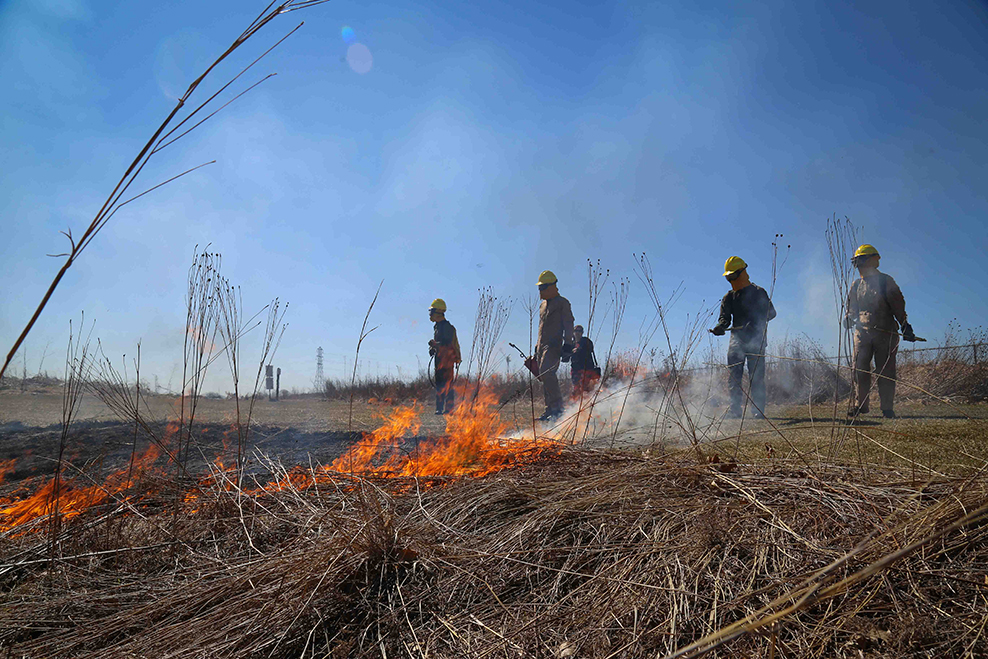Latest reports show the death toll in the Bahamas has risen to 50 after Hurricane Dorian left the islands seeking lifesaving assistance this past week.
The storm comes at a time when natural disasters around the globe are growing in intensity, a trend that many scientists believe is caused by rising surface and ocean temperatures.An article released by The Washington Post last month explored data from peer-reviewed scientific studies kept by NASA and the National Oceanic and Atmospheric Administration to look at the effects of these rising temperatures around the United States.
The studies examined showed that on average, the U.S. has increased in temperature by 1.8 degrees since 1895. And in places like Ventura County, California, temperatures have risen over 4.5 degrees in the last 125 years. Winters are becoming milder, beaches are shrinking, sea-life has diminished and natural disasters are devastating communities.
Studies analyzed by the National Climate Assessment (NCA), show these trends aren’t exclusive to the coastlines. The Midwest is feeling the ripples of the global crisis.
With temperatures warming, and increases in humidity and precipitation in the Midwest, The NCA says these changes are bound to affect agriculture, forestry, biodiversity and more.
“Projected changes in precipitation, coupled with rising extreme temperatures before mid-century, will reduce Midwest agricultural productivity to levels of the 1980s without major technological advances,” the NCA wrote.
As for Goshen, the area could see similar changes.
The Washington Post’s studies showed Elkhart County’s temperature has risen 2.5 degrees since 1895. With this in mind, city government has recognized these affects taking place in the community, around the nation and throughout the globe and have sought to look closer at some of the ways Goshen plays a role.
Many discoveries pointed to the inefficient use of energy courtesy of fossil fuels.
In an article written by the Elkhart Truth in July, Jordan Fouts said the Goshen City Council began discussing a study conducted by Indiana University graduate student Bronson Bast.
“The study looks at the biggest sources of carbon emissions in city government – from where its energy comes from to how much gas department vehicles use – and suggests ways to cut back,” Fouts wrote.
And in response, last Tuesday the council voted 4-3 in favor to approve the creation of a department of environmental resilience.
Goshen College has also had time to examine their carbon footprint and ways to improve their practices around campus.
For instance, the prairies on campus fight climate change by sequestering carbon. The deep roots of the native grasses and forbs slowly add organic matter to the soil as they grow and die. Prairie fires are not an effect of climate change, but a prescription for prairie health.
Dr. Ryan Sensenig, professor of biology, burns the prairies every spring to keep them healthy. Prairie plants evolved with fire. Their extensive root systems help them grow back, vigorous and healthy, after a burn.
Without fire, invasive cool season grasses would choke out the native species.
Additionally, about six years ago, Glenn Gilbert, director of facilities, said the college acknowledged inefficient ways they were using electricity and started a renewable energy credit towards purchasing wind energy.
By spending about $6,000 more each year, Gilbert said the college was able to essentially cut their carbon footprint in half.
“It’s one way of holding yourself accountable,” he said.
Last year, GC installed 924 solar panels on top of the Recreation-Fitness Center as an initiative to offset the Church-Chapel’s electric bill.
On top of these more sustainable methods, Gilbert says his focus has shifted to conservation.
“It doesn’t make sense to manufacture expensive electricity and then waste it,” he said. “It doesn’t matter how green it is.”
With this in mind, the college has been more proactive in reducing energy consumption around campus by making scheduled changes, like turning the air conditioning off when a building is not being used.
With these implementations, electric consumption at GC has been progressively dropping over the last 10 years and the college has matched 1992 levels of consumption despite having 60% more square footage.
Still, Gilbert believes the damage of climate change has already been done.
“There’s no question in my mind that the climate has changed,” he said. “Very few of us know what the future is bringing except that it’s going to be different.”



